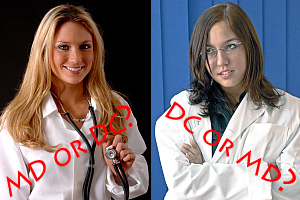 Many people think of chiropractors as only “back doctors”. Although it is true that chiropractors spend a good part of their day treating neck and back pain, the whole body benefits from regular chiropractic care. One of the body’s systems that may improve with chiropractic care is the circulatory system.
Many people think of chiropractors as only “back doctors”. Although it is true that chiropractors spend a good part of their day treating neck and back pain, the whole body benefits from regular chiropractic care. One of the body’s systems that may improve with chiropractic care is the circulatory system.
Blood flow to the brain, as most people can imagine, is critically important. Nausea, dizziness, fainting and migraine headaches can be caused by reduced cerebral blood flow (called hypoperfusion). Reduced circulation can damage your brain’s cells, due to the reduction of nutrients and oxygen. Decreased blood flow can also lead to an increased risk of cell death, stroke and dementia. Cerebral hypoperfusion may cause other disorders as well, including hearing, visual and spatial problems.
A recent study published in the Journal of Manipulative and Physiological Therapeutics has shown that there is an association between vertebral subluxations, neck pain and cerebral hypoperfusion. The study was performed on 45 people who had chronic upper back pain, neck pain, or both. The study subjects were examined and assessed for neck pain by using a standard scale, the Neck Disability Index (NDI). Subjects’ brains were then scanned using single-photon emission computed tomography (SPECT), which creates imaging of the brain’s blood flow. Patients were also examined to determine the number of vertebrae that were out of alignment.
Subjects were consequently put into one of three groups, based on their NDI scores: mild, moderate and severe. The mild group (14 people) showed normal blood circulation in all eight regions of the brain. The moderate group (16 people) had a 20% to 35% reduction in brain circulation, most of which happened in the frontal and parietal zones of the brain. The severe group (15 people) showed a decrease in blood flow to the brain of 30% to 45%, also primarily in the frontal and parietal zones. The parietal zone is responsible for vision and spatial sense and the frontal zone is responsible for controlling voluntary motor coordination and regulates dopamine sensitivity, which is important for memory and maintaining mental health.
When a chiropractor performs a spinal adjustment, pressure is removed from the nerves and messages between the nerves and brain regarding blood flow are allowed to move smoothly again. By correcting these vertebral subluxations, your chiropractor can help to restore healthy circulation to the brain.
Chiropractors also often employ heat therapy, massage therapy and ultrasound in their practice, which increase circulation. Ultrasound uses high-frequency sound waves to penetrate the tissue up to five inches below the skin’s surface, increasing circulation that reduces swelling and brings added oxygen and nutrients to the painful area.
Good circulation is important at any age and-as studies have shown-the better your circulation, the healthier you will be overall. Your chiropractor can help ensure that you get adequate blood flow to your brain and your entire body.
James Barger, DC has had over 30 years experience treating thousands of Folsom, CA area residents through safe, effective chiropractic care. Call 916-984-9999 for an appointment now, or stop by at 231 Blue Ravine Road, #200, Folsom, CA 95630.







